

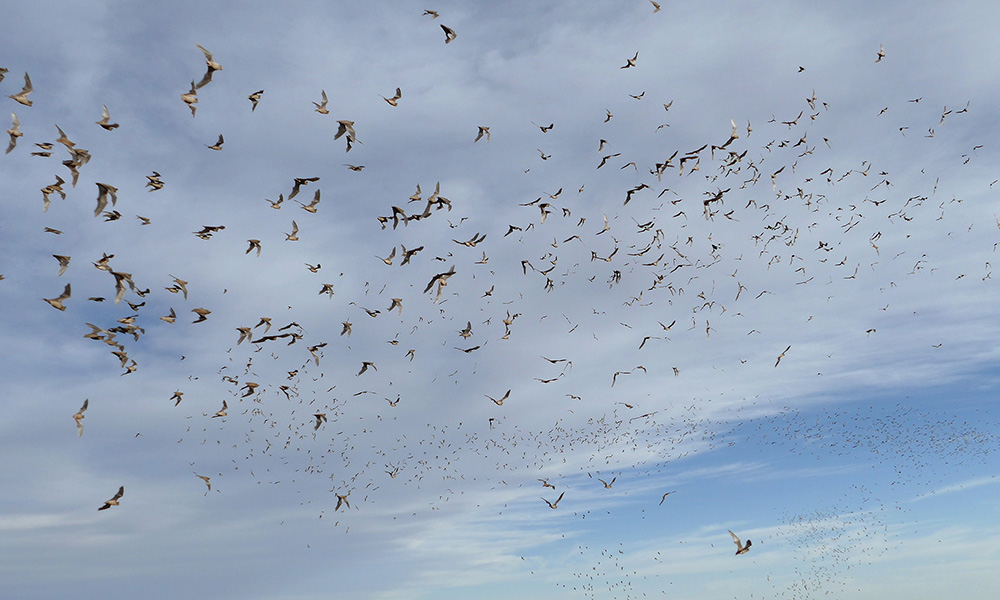
We are an internationally-leading biomechanics research team specialising in the dynamics, guidance, and control of flight, with an increasing emphasis on natural and artificial intelligence. Based in Oxford's Department of Biology, our work combines fundamental research on animal flight with translational research on bio-inspired engineering and computer vision.
We seek to understand the mechanisms and architectures of the biological systems we study with the same depth and rigour as an engineer or computer scientist developing a technical system. More ambitiously, we aim to use this insight to uncover the functional “design” principles that emerge through the evolutionary interaction of learning, natural selection, and physical constraint.
Our applied goal is to identify new guidance and control algorithms, new deep network architectures, and new hardware solutions, to guide the design of new technologies. Applications range from biomimetic sensors to bio-inspired autonomous systems and bio-informed design of the built environment.
More fundamentally we aim to understand – and ultimately predict – how these same organizational principles and algorithms emerge from the interaction of physics and physiology that characterizes life.
We achieve this by combining state-of-the-art experimental facilities, ground-breaking imaging techniques, and technically challenging fieldwork with advanced mathematical theory in a diverse, inter-disciplinary research programme.
The Oxford Flight Group is led by Professor Graham Taylor. Our first spinout company, Animal Dynamics, is led by Professor Adrian Thomas.
Most of the recent research described on this website has received funding from the European Research Council (ERC) under the European Union's Horizon 2020 research and innovation programme (Grant Agreement No. 682501) on Project HawkEye.
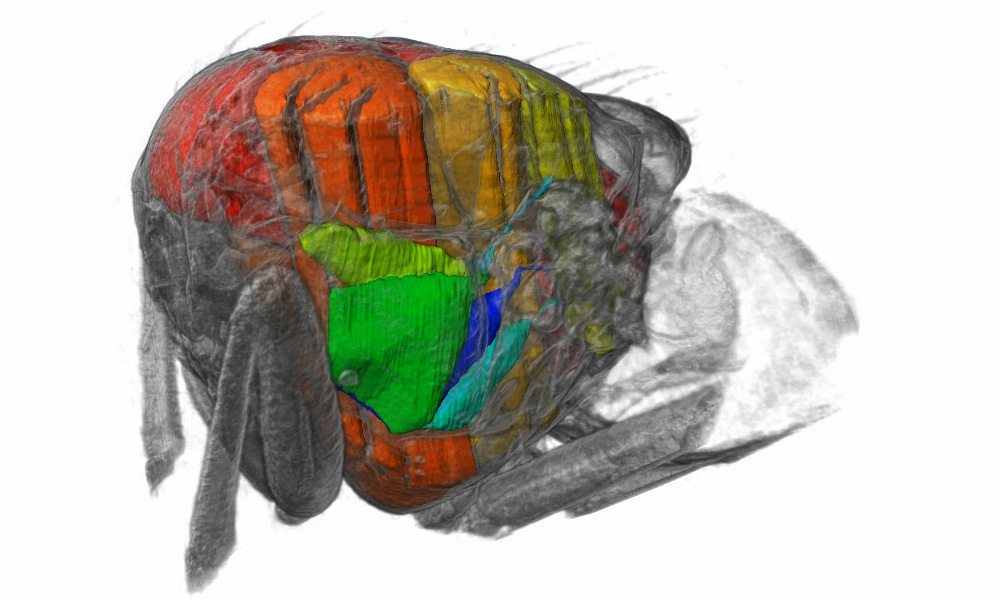
Our work features regularly in online, broadcast, and print media. A feed of recent stories follows below, together with news of recent activities and upcoming opportunities.
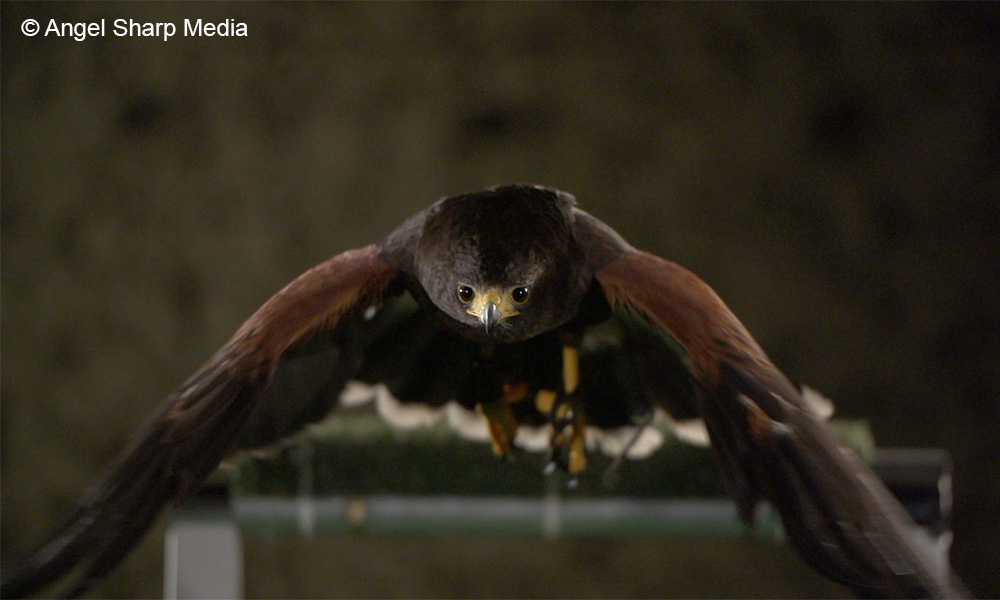
Quanta Magazine. 3 August 2022. In a rectangular room draped in camouflage netting, four Harris’ hawks took turns flying back and forth between grass-covered perches while scientists recorded their every biomechanical flutter.... [read on]

New Scientist. 29 June 2022. A diving manoeuvre used by raptors to slow down before landing on a branch could improve technology for flying and perching drones... [read on]
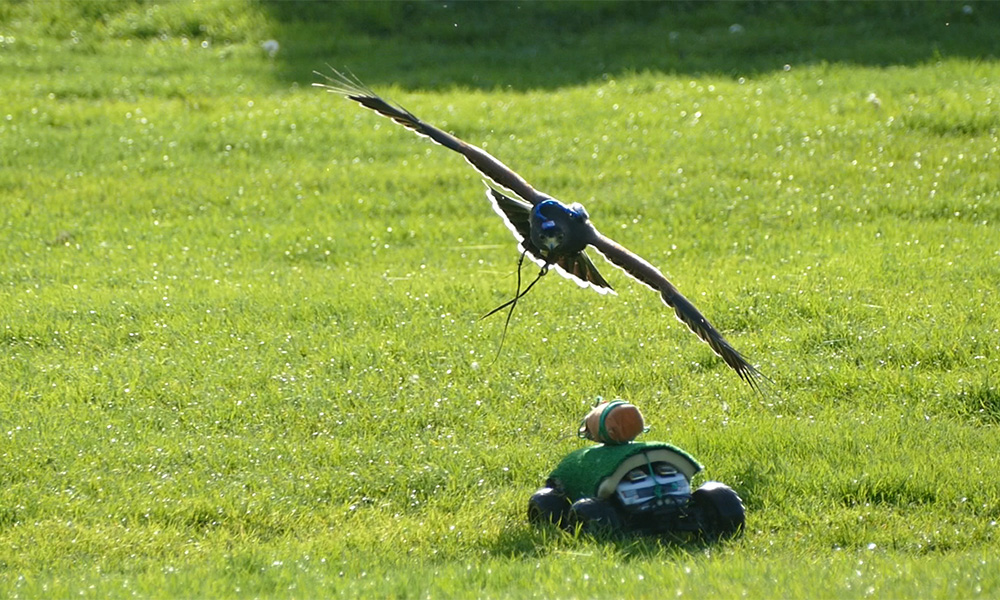
Horizon Magazine, EU. 1 June 2021. A bird flaps its wings, glides using air currents and then smoothly descends to perch on a pole. But this is not just any bird, it’s a robot bird. And robots like these could in the next decade be used to respond to emergencies or to hunt down drones posing a threat to safety or security... [read on]
Tumble Science Podcast. 18 October 2019. How do peregrine falcons dive so fast? That’s what Tumble science podcast listener Henry wants to know... [listen here]

iNews, UK. 11 June 2019. The flight trajectory of hawks could help to inform future drones designed to chase and hunt down fellow unmanned aerial vehicles, a study suggests... [read more]
The Laboratory with Leaves, UK. 23 May 2019. Flight is perhaps the most complex form of movement in the animal kingdom. Researchers at Oxford’s Wytham Woods are looking at exactly how it works, while branching out into how birds perch. [watch here]
Oxford, UK. 12 March 2019. Planthopper bugs may be small, but they attract mates from afar by sending vibrational calls along plant stems and leaves using fast, rhythmic motions of their abdomen.
Washington Post, USA. 12 April 2018. Peregrine falcons, apex predators that hunt near rock cliffs and skyscrapers, strike like a stock market crash: fast and hard. The birds fly to great heights, then tuck their wings and plummet... [read on]
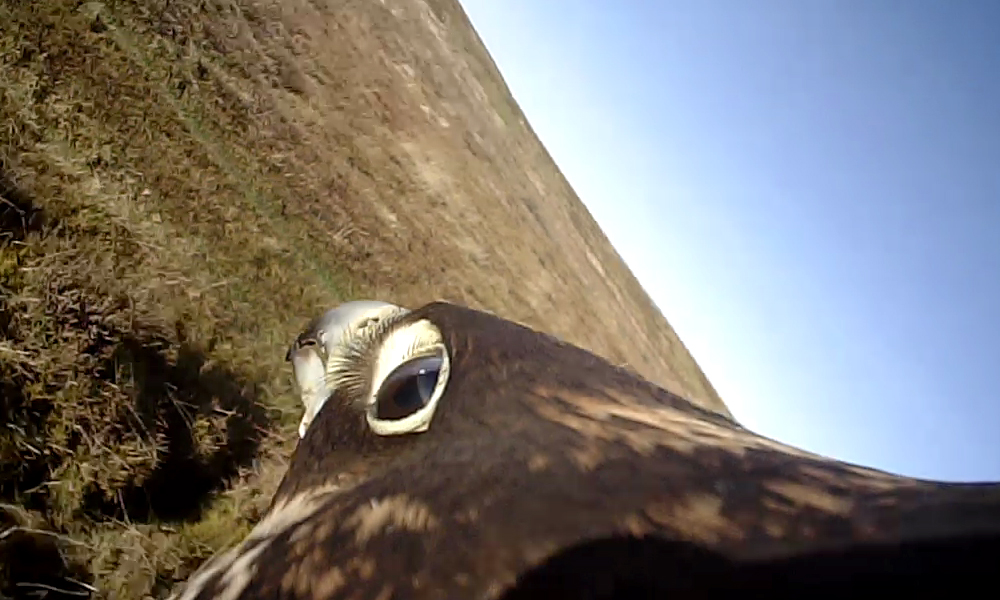
National Public Radio, USA. 4 December 2017. Peregrine falcons, known for making spectacular dives to snatch smaller birds midair, conduct their aerial assaults in much the same way that military missiles hit moving targets... [read on]

BBC World Service, UK. 7 December 2017. By analysing how a peregrine falcon chases its prey in flight, scientists have discovered that they track their prey in the same way as tracking missiles lock on to their target. This clever way of hunting on the wing is now being copied and applied to drone technology, as a way of making drone-hunting drones to try and thwart the growing number of crimes committed by these flying machines... [listen here]

Business Insider, UK. 19 April 2017. Scientists have solved the mystery of mosquito flight using super high-speed cameras and computer analysis to understand the unique mechanisms the insect uses to stay airborne... [read on]
We run a wide-ranging programme of public engagement activities in addition to our work with the media. Our lab at the John Krebs Field Station, Wytham, is home to our flying team of five Harris' Hawks – Drogon, Rhaegal, Toothless, Charmander, and Ruby - and our colony of zebra finches used for experiments on learning. We welcome visits from schools and youth groups by prior arrangement.
We opened our lab to the public in 2022 as part of the Oxford Science + Ideas Festival Animal Senses Zone. This builds on a collaboration "Digital Body: Ascent" involving the Parasol Dance Project for disabled and non-disabled young people, the Alexander Whitley Dance Company, and iF-Oxford. See the beautiful video that resulted from this collaboration here.
For a science podcast aimed at school kids, listen here to our Tumble science podcast on peregrine falcons. Recent team member Inés Dawson also hosts her Draw Curiosity website and YouTube video channel to stimulate and entertain curiosity with interesting science.
Every year, our lab hosts visits from Oxford’s UNIQ programme, which aims to help students studying at UK state schools and colleges to take informed decisions about higher education by offering hand-on experiences of study and research. See the great video here for our students' perspectives on what the Biology course at Oxford has to offer, including some footage of the Wytham Flight Lab, which all of our undergraduates visit in the first year of their course, and where every year we host undergraduates for their final research projects.